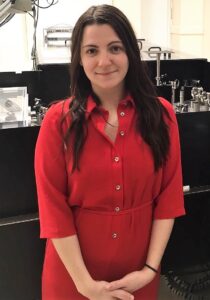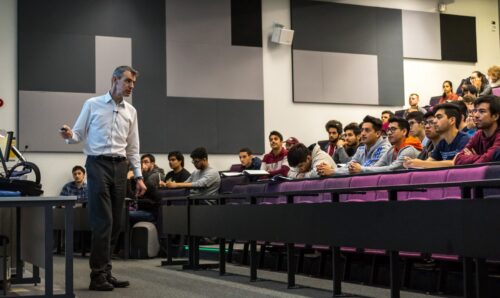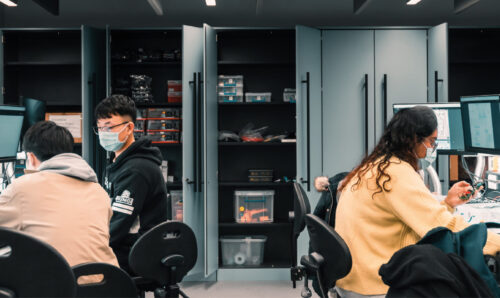Department academic awarded Fellowship
Meet the Department 30 April 2020
 Photon Science Institute academics Dr Jessica Boland (Department of Electrical and Electronic Engineering) and Dr Patrick Parkinson of the Department of Physics and Astronomy have both been appointed a Future Leader Fellowship (FLF) cohort.
Photon Science Institute academics Dr Jessica Boland (Department of Electrical and Electronic Engineering) and Dr Patrick Parkinson of the Department of Physics and Astronomy have both been appointed a Future Leader Fellowship (FLF) cohort.
Dr Boland is a Lecturer in Functional Materials & Devices with the department and the mentor to our Beatrice Shilling undergraduate scholarship awardees.
The FLF is a £900 million fund which is aimed at helping to establish world-leading researchers and innovators in both business and academia, is run by the UK Research and Innovation (UKRI).
Dr Boland’s fellowship is entitled ‘Terahertz, Topology, Technology: Realising the potential of nanoscale Dirac materials using near-field terahertz spectroscopy’.
This project will combine ultrafast terahertz spectroscopy with scattering-type near-field optical microscopy to examine materials at 3 extremes: low temperatures, sub-picosecond timescales and nanometre length scales. This will provide a direct feedback loop between material characterisation and device development, enabling development of prototype THz devices for healthcare imaging systems and ultrafast wireless communication.
Technology is constantly evolving. Even within our lifetime, devices have become noticeably faster and smaller with increased functionality; yet these ‘smart’ devices still suffer from high power consumption and poor energy storage. Integrative photonic, electronic and quantum technologies are key to creating the next-generation of devices that are more energy-efficient with unprecedented performance. Advanced functional materials will form the basis of these new technologies. Dirac materials, in particular, have attracted significant attention as candidates for novel devices, owing to their extraordinary optoelectronic properties. For these materials, the surface hosts Dirac electrons that are immune to backscattering from non-magnetic impurities and defects. Their direction of travel is fixed by their inherent angular momentum or ‘spin’, so they behave as if on a railway line – travelling with less resistance and heat production. In particular, these materials have emerged as promising candidates for novel terahertz (THz) device, which are poised to impact several sectors, including security, food processing, healthcare and wireless communication. However, to realise their full potential, an in-depth understanding of key device parameters (e.g. conductivity) in these materials is vital.
This research project aims to provide non-destructive material characterisation at 3 extremes: nanometre (<30nm) length scales, ultrafast (<1ps) timescales and low temperatures ( <10K). By employing scattering-type near-field optical microscopy (SNOM) with ultrafast optical-pump terahertz-probe (OPTP) spectroscopy (OPTP-SNOM), their surface photoconductivity response will be mapped for the first time with <30nm spatial and <1ps temporal resolution. Working with University of Leeds, Oxford and NPL, nano-tomography will be performed to form a 3D map of local carrier concentration, carrier lifetime and electron mobility, providing deeper insight into their optoelectronic properties. Utilising this newfound knowledge, the exclusive P-NAME facility at Manchester will be used to spatially dope optimised materials with <40nm spatial accuracy to control electronic properties on nanometre length scales. This will allow design of bespoke nanosystems for device applications, such as THz emitters and detectors. In collaboration with Teraview, these systems will allow development of prototype THz devices for healthcare imaging systems and ultrafast wireless communication.
Dr Boland also added: “I am extremely excited to start this fellowship. It will allow me to build up my own research team and work with world-leading groups at University of Leeds, Oxford and NPL to investigate novel nanomaterials (e.g. topological insulators) over a new regime and design bespoke nanoscale systems for device applications. Working alongside Teraview, the fellowship aims to develop prototype terahertz devices for healthcare imaging systems and ultrafast wireless communication.”
Information from Photon Science Institute





Leave a Reply